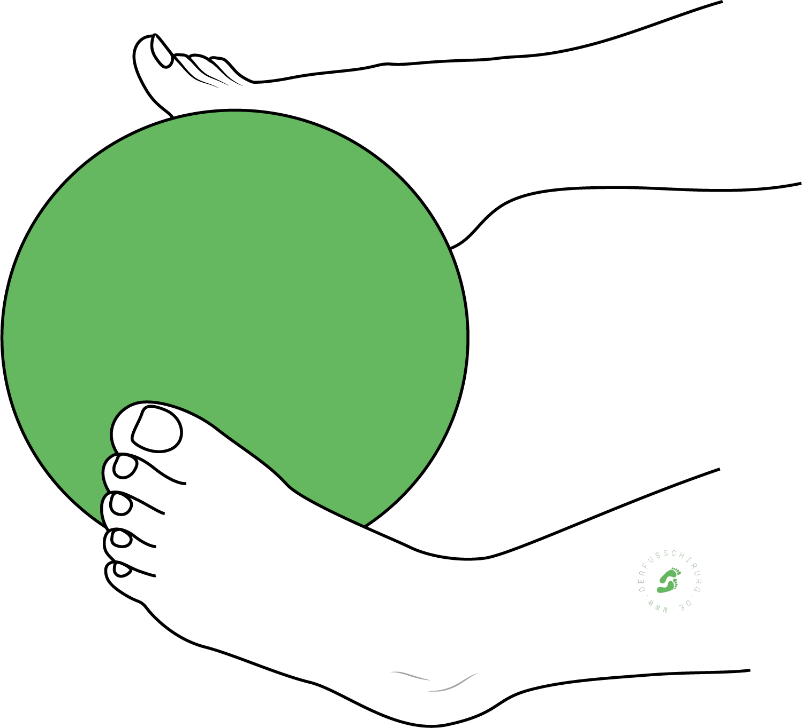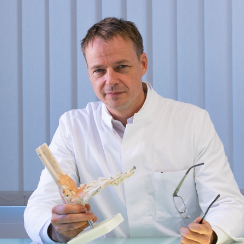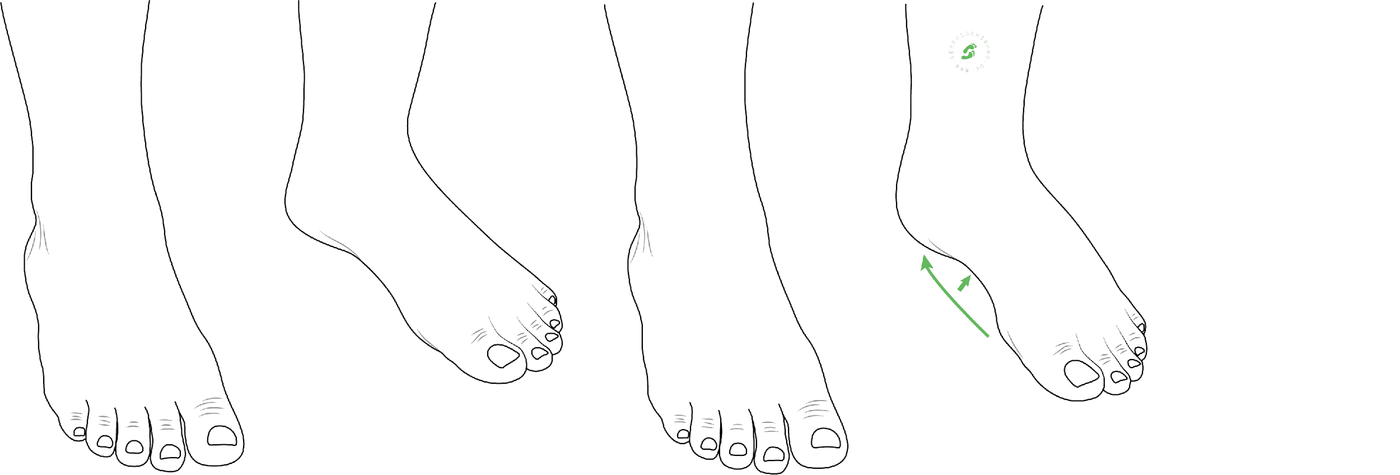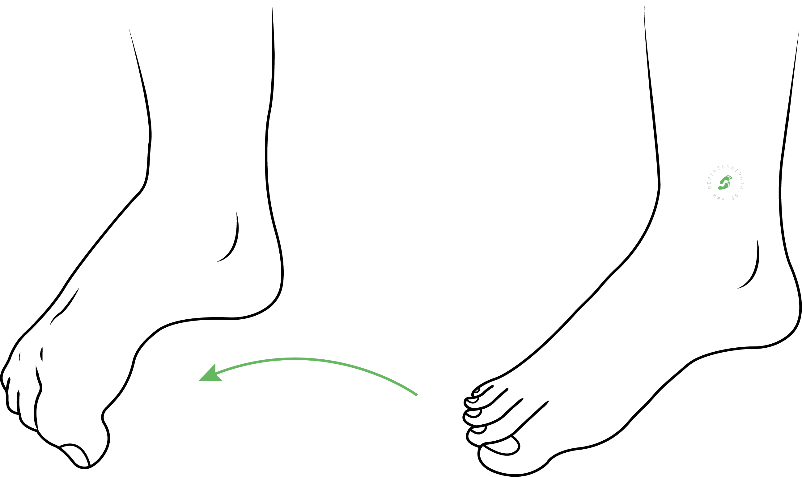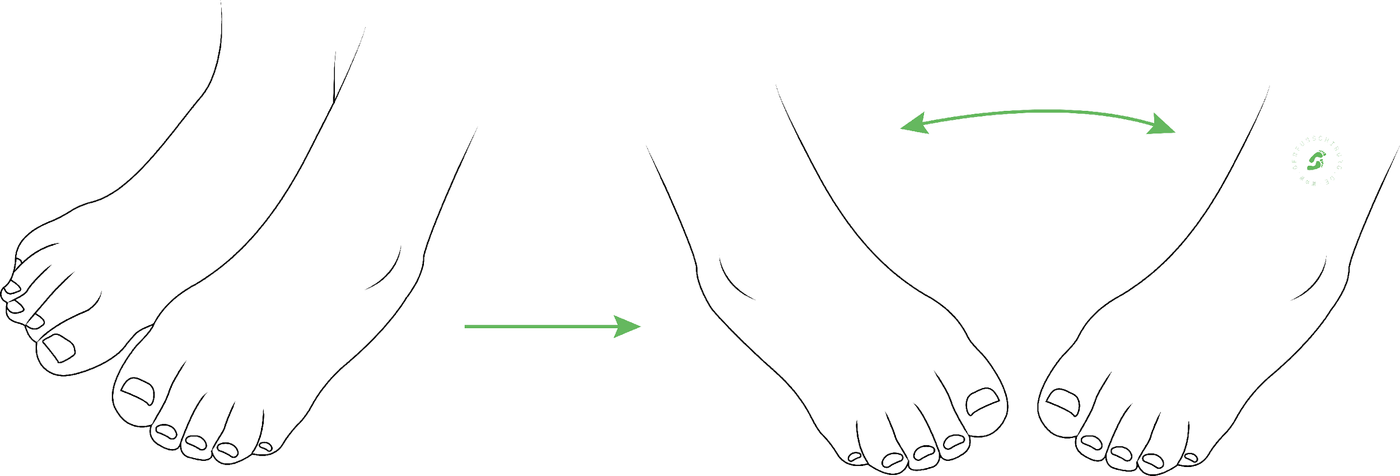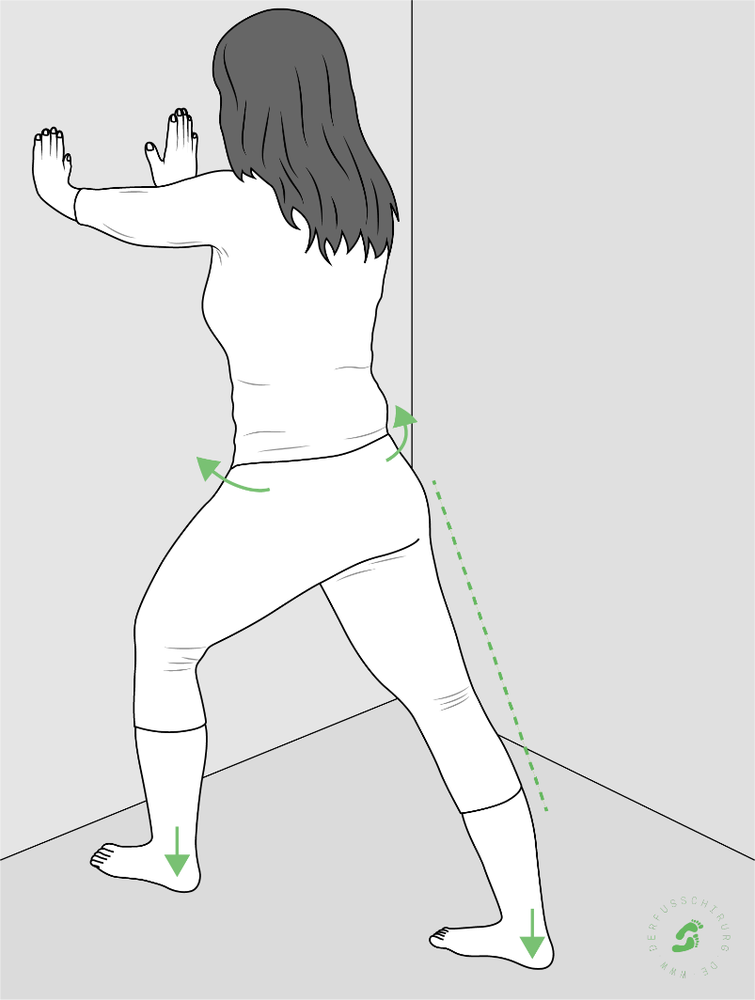 Special foot gymnastics exercises can be helpful for a wide variety of foot pain and foot malposition, e.g., hallux valgus (a chronic crooked position of the big toe). Especially when it comes to preventing foot diseases or supporting foot treatment, foot exercises can be very useful. They not only train your feet and strengthen your foot muscles, but also support the statics of your feet and thus the entire body statics.
Special foot gymnastics exercises can be helpful for a wide variety of foot pain and foot malposition, e.g., hallux valgus (a chronic crooked position of the big toe). Especially when it comes to preventing foot diseases or supporting foot treatment, foot exercises can be very useful. They not only train your feet and strengthen your foot muscles, but also support the statics of your feet and thus the entire body statics.
To help you find the right exercises for your symptoms, we have compiled the best ones here:
- Helpful exercises for a hallux valgus deformity
- Therapy solutions for plantar fasciitis and heel spurs
- Positively influence the course of Achillodynia by stretching the Achilles tendon
- Positive effect through exercises in the early phase of a bent low splay foot (flat foot)
- 7 effective exercises to improve your foot statics and foot musculature
You will see that short daily training sessions can bring amazing progress. You can already do some simple foot exercises yourself without special aids and easily integrate them into your everyday life. For a more extensive gymnastics programme, you should think about physiotherapy.
Learn the right gymnastic exercises here that can support the treatment of hallux valgus, flat feet, or heel spurs, for example, the "foot screw" or the "caterpillar gait" exercise.
For patients with hallux valgus, the foot surgeon Dr. Tonio Gottlieb is your contact person for everything to do with foot health and foot surgery. He examines you with the utmost care and always has the entire body statics in mind. Whether you need an initial diagnosis or a second opinion - make your personal consultation appointment now!
With these 7 exercises you can counteract the development of an hallux valgus and improve your foot statics, among other things
If you want to curb the progression of foot malposition and alleviate discomfort, we have put together simple and effective exercises here that you can do at home without any problems or much preparation.
We have put together a total of 7 effective exercises for you.
Exercises 1-6 are particularly suitable for:
- Hallux valgus (bunion)
- Plantar fasciitis (inflamed tendon plate on the underside of the foot at the level of the heel bone)
- Heel spur
- Achillodynia (pain syndrome in the Achilles tendon)
- Flat foot (bent, flat and splayed foot)
Exercise 7 is particularly suitable for:
- Plantar fasciitis (inflamed tendon plate on the underside of the foot at the level of the heel bone)
- Heel spur
- Achillodynia (pain syndrome in the Achilles tendon)
Therefore, start right away with the following simple foot gymnastics exercises and soon benefit from the positive results!
Foot massage to prepare the foot for gymnastics
The foot massage prepares the foot for gymnastics, loosens tense muscles and sensitises the sole of the foot.
Lightly stroke the sole of the foot with both thumbs. This makes the forefoot hollow.
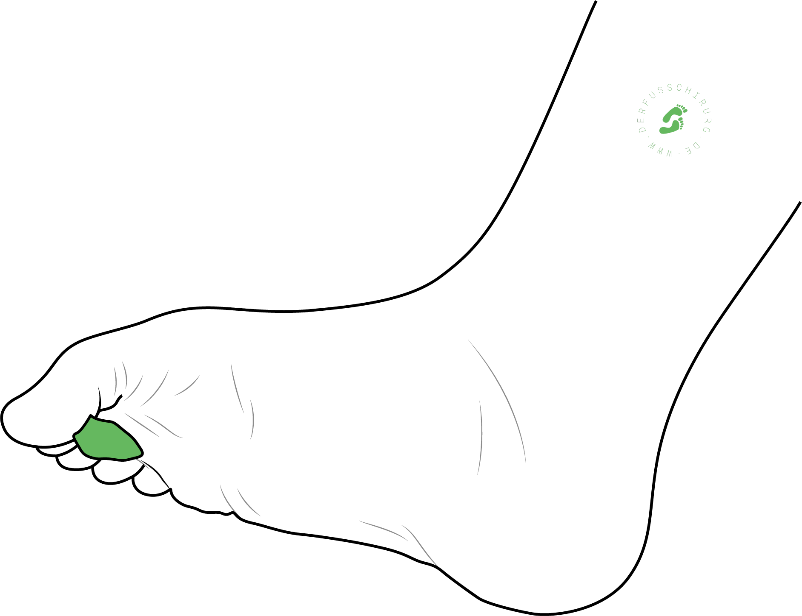 Exercise 1: four small exercises to strengthen the foot and toe flexors with everyday objects
Exercise 1: four small exercises to strengthen the foot and toe flexors with everyday objects
Suitable for: Hallux valgus, plantar fasciitis, heel spur, achillodynia, flatfoot
This is how the exercises work:
Grasp a small stone (see illustration) or other small objects with your toes. Tear a paper handkerchief with your toes. Lay figures (e.g.: circles or words) with a rope. Gather a weighted cloth with your toes.
Recommended repetitions: 10 in total
They have this effect: These foot exercises with everyday objects help to strengthen the foot and toe flexors.
Exercise 2: more strength for the transverse and longitudinal arch of the foot through the "ball" exercise
Suitable for: Hallux valgus, plantar fasciitis, heel spur, achillodynia, flatfoot
This is how the exercise works:
Hold a ball with the inner side of your feet. Lift the ball for a few seconds.
Recommended repetitions: 10
It has that effect: With this exercise you effectively strengthen the transverse and longitudinal arch of the foot.
Exercise 3: with the "foot-screw" exercise you activate the muscles of the big toe.

Suitable for: Hallux valgus, plantar fasciitis, heel spur, achillodynia, flatfoot
This is how the exercise works:
Sit on the floor. Place the right foot in front of you. Let the knee sink outwards onto a cushion or ball. Now place the foot on the edge of the foot. Hold the heel with your left hand. With the right hand now stroke along the edge of the shin and grasp the foot at the level of the instep. Now turn the foot slightly forwards and downwards in a spiral against the resistance of the hand on the inner edge of the foot. Then bring the foot back and repeat the screw-like movement several times. Repeat the exercise with the left foot.
It has that effect:
Therapy according to Spiraldynamik® with the "foot-screw" exercise trains all the muscles that bring the foot into the spiral shape. This strengthens the statics of the foot at the same time.
Dr. Gottlieb, the specialised foot surgeon in Berlin advises:
"Hallux valgus gymnastics is the only therapy for the foot that is absolutely risk-free and therefore definitely recommended!"
Exercise 4: Build up and strengthen the arch of the foot with gymnastics
Suitable for: Hallux valgus, plantar fasciitis, heel spur, achillodynia, flatfoot
This is how the exercise works:
Assume a standing position. The foot remains on the floor. First distribute the weight centrally over the foot. Then tense all the muscles of the sole of the foot and pull the big toe towards the heel. The pressure points are under the heel, outer edge of the foot and ball of the big toe.
Recommended repetitions: 2 x 10
Who wants more:
You can also do this exercise in a step position, later standing on one leg or on unstable surfaces.
It has that effect:
This gymnastic exercise stabilises the arch of the foot and thus strengthens the entire statics of the foot.
Exercise 5: With the "caterpillar walk" exercise you strengthen the foot muscles and stabilise the arch of the foot.
Suitable for: Hallux valgus, plantar fasciitis, heel spur, achillodynia, flatfoot
This is how the exercise works:
Sit on a stool or chair. Point your toes forward. Crawl forward with the right foot "like a caterpillar". Slowly move the foot forward by grasping it with the toes. While doing this, curl the big toe as far as possible.
Recommended repetitions: 5 x back and forth, then repeat with the left foot.
It has that effect:
These gymnastics strengthen the foot muscles and thus stabilise the arch of the foot.
Exercise 6: Strengthen the small foot muscles with the help of "toe claws and spreads
Suitable for: Hallux valgus, plantar fasciitis, heel spur, achillodynia, flatfoot
This is how the exercise works:
Sit on a chair and alternately clench and spread your toes. Do the exercise first with the right foot and then with the left foot.
Recommended repetitions: 3 x 10
It has that effect:
With this exercise you train flexibility and coordination on the one hand and strengthen the small foot muscles at the same time.
Exercise 7: Calf stretching and dorsal extension training
Suitable for: Plantar fasciitis, heel spur, Achillodynia
This is how the exercise works:
Assume a step position. Both feet are in contact with the floor. The toes are pointing forward. Now stretch the back leg and push the hip forward. The heel remains on the floor. Hold this position for 20 to 30 seconds.
Recommended repetitions: 3 to 5
It has that effect:
The aim of the exercise is to stretch the calf or Achilles’ tendon.
The foot surgeon Dr Tonio Gottlieb, MD, is an experienced specialist in all aspects of foot health and foot surgery. He examines you with the utmost care and keeps an eye on the entire body statics. Based on a comprehensive diagnosis, he will always give you a stringent recommendation for action.
The foot surgeon Dr Tonio Gottlieb is an experienced specialist in all aspects of foot health and foot surgery. He examines you with the utmost care and also keeps an eye on the entire body statics. Based on a comprehensive diagnosis, he will always give you a stringent recommendation for action.
You can achieve initial results with just five minutes of gymnastics in the morning and evening
Integrate your foot exercises into your daily routine and exercise regularly twice a day, preferably in the morning and evening. As with all physical exercises, continuous training pays off and you can improve the statics of the foot and strengthen your foot muscles in the long term. This can have a positive effect on a wide variety of foot malposition’s such as the bunion or the bend-lower-spread foot and the associated health problems.
How often should hallux valgus therapy exercises be performed per week?
You should do your foot exercises daily if possible. The investment of just five minutes of gymnastics can be helpful in the long term for strengthening the entire foot statics. It is best to exercise at fixed times, for example in the morning immediately after getting up and in the evening before going to bed. Make your foot therapy exercises a routine you have come to love.
Reduce the progression of a hallux valgus deformity with suitable exercises
Many patients suffer from the bunion of the big toe, also called hallux valgus. The following foot exercises 1-7 are particularly suitable for patients who suffer from hallux valgus.
Regular exercise not only helps to strengthen your foot muscles, but pain can also be reduced; it may also be possible to stop further growth of the bunion with regular gymnastics.
Dr Tonio Gottlieb MD: "In the case of a foot malposition such as hallux valgus, the muscles of the foot are already extremely misaligned. Special gymnastics can strengthen the statics and thus make the foot more resilient. Regular training of the foot muscles counteracts further lowering of the arch of the foot and thus further development of hallux valgus."
A hallux valgus deformity can only be permanently corrected by a hallux valgus operation.
Have you been suffering from pain caused by hallux valgus for many years? Is your bunion particularly pronounced and causing pain in your shoes? Do you have the first signs of a bunion on your big toe?
No matter what stage your hallux valgus is in, consult a specialist foot doctor and foot surgeon who has extensive experience - both in terms of conservative therapy and potentially necessary hallux valgus surgery.
More tips on toe exercises for hallux valgus
A pronounced hallux valgus cannot be revised by toe gymnastics but can only be straightened surgically. However, regular gymnastics can alleviate mild discomfort. These include walking on tiptoe, alternately curling and spreading the toes, or walking barefoot - preferably on soft ground such as sand. You can also specifically train the crooked big toe: First lift the big toe and keep the other four toes on the ground. Then the other way round: try to lift the four little toes while pressing the big toe to the ground.
Exercises offer a simple but useful therapeutic solution for plantar fasciitis and heel spurs.
Would you like to support the healing process of an inflammation of the plantar fascia or prevent plantar fasciitis? Do you suffer from heel pain that occurs especially with pressure and strain? Then the foot exercises 1-7 could be helpful for you.
With these exercises you strengthen the foot muscles and get your feet in shape. Exercise 7 in particular stretches not only the foot but also the calf and the Achilles tendon and therefore helps to strengthen the feet and withstand stress. If you suffer from occasional or even frequent pain due to plantar fasciitis, heel pain or a heel spur, you should consult a specialist in foot surgery and discuss with him the type and frequency of exercises that are suitable for you. An individual therapy plan that can reduce your foot pain and bring you optimal healing can be created.
Stretching exercises provide an effective treatment base for plantar fasciitis
Stretching exercises such as exercise number 7 are particularly helpful for plantar fasciitis to become symptom-free again. The most suitable treatment plan for you, which can include foot exercises as well as other elements of conservative therapy, is best discussed with your foot surgeon or physiotherapist.
Here you will find the foot exercises 1-7.
Targeted exercises can usefully support the treatment of a heel spur
You can specifically support the healing of a heel spur with foot exercises. At the same time, these exercises also help to prevent a heel spur, because foot exercises support the mobility of the feet and strengthen the foot muscles.
Please discuss with your physiotherapist or foot doctor. After a thorough examination, he or she will coordinate the right exercises with you and set up an exercise plan as part of the therapy. You can find the exercises here.
Early exercises to strengthen the Achilles tendon can positively influence the course of Achillodynia
Our feet carry our entire body weight and are largely responsible for good body statics. Regular foot exercises strengthen the feet and foot muscles and make them more resilient. They help to strengthen the feet and calves and prevent pain in the feet, ankle, or Achilles’ tendon. Furthermore, gymnastic foot exercises can support healing processes.
All 7-foot exercises are suitable for strengthening the Achilles tendon and preventing Achillodynia. You can find out more about the exercises here.
Exercises in the early phase can have a positive effect on a bent, flat, and splayed foot.
Many people suffer from a pes plano valgus, colloquially also called a flatfoot. Exercises 1-7 can help curb this foot malposition and reduce pain.
You should discuss with your foot doctor or physiotherapist the extent to which foot exercises can counteract a foot malposition in the case of a flatfoot in your individual case. It is important to have a precise examination and a concrete diagnosis. Based on this, your therapist can draw up a treatment plan with you. You can find the exercises that you can do for a pes plano valgus here.
A specialist should always be consulted if surgery is required for a flat foot
Every treatment for pes planus must be planned individually. It depends on many factors such as the type and duration of the pain, the patient's life circumstances and age, etc. Whether a conservative therapy with supplementary foot therapy exercises is sufficient or whether a flatfoot operation is necessary can only be determined by the patient and the doctor in a joint discussion - after a concrete diagnosis.
Dr Tonio Gottlieb, MD is a specialist in foot surgery with his own practice in Berlin. He has been practising for over 20 years and takes time for his patients to always achieve the best possible result.
What pain is normal during gymnastics exercises?
Ideally, the gymnastic exercises should be pain-free for a diagnosed bunion. However, depending on the clinical picture, individual pain may occur during individual exercises. In case of more severe or permanent pain, you should consult your foot surgeon.
Results take time, but can last
As with any other sporting activity, training success only comes after regular practice. Be patient and let your exercise programme become a daily routine.
Tonio Gottlieb, MD, an experienced foot surgeon in Berlin, advises:
„If you are consistent and do gymnastics regularly, you can gradually enjoy positive results. Once the initial training deficit has been made up, it is important to maintain the new training status in everyday use. Incidentally, this applies not only to hallux valgus, but also to other conditions of the foot, such as heel spurs.”
Despite the positive effect of special gymnastic exercises for a wide variety of foot complaints, e.g., as part of a conservative therapy, patients should always bear in mind that certain malposition’s can only be permanently eliminated by surgery. If you have already been suffering from mobile restrictions for several years, e.g., when doing sports, jogging, or hiking, or if you have been in pain for many years, then a surgical correction is recommended.

